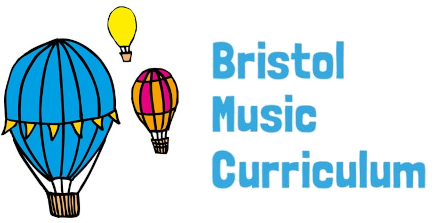Key Learning Objectives To perform a sequence of movements to a song. To maintain a steady pulse. To clap the rhythm of the song. To trace the pitch of a melody. Starter activity: Class vocal warmup using the track, ‘Plasticine person’, engaging with different vocal sounds and exercises for the vocal muscles. Main activity: Learn the traditional […]
Tag: Duration
Year 2, Unit 3: Songs of the City – Lesson 6
Key Learning Objectives: To sing with increasing confidence and control as an individual and in a group. To identify a mood and sing with expression. To understand the significance of folk songs and oral tradition. Starter activity: Vocal warm up using the track, ‘Boom chicka boom’. The teacher to change a dimension of the music and […]
Reception, Unit 3, Calypso – Lesson 3
Early Learning Goal: To understand that different instruments sound different (identify timbre). Starter activity: Introduce the concept of ‘timbre’ as the tone colour of the sounds/instruments that the children hear. Listen to, ‘Creepy Crawly Calypso’ and discuss words which describe the different timbres found within the track. Main activity: Revisit the track, ‘Mini-beast Calypso’, inviting the children […]
Reception, Unit 3, Calypso – Lesson 2
Early Learning Goals: To feel rhythm and respond with movement. To sing as part of a group. Starter activity: Revisit the style of music that is Calypso, followed by a listening and response task based on the song ‘Calypso with me’, focussing on creating actions to represent each creepy crawly. Main activity: Learn the song ‘Calypso with […]
Year 6, Unit 2: Samba – Lesson 1
Key Learning Objective: To identify features of Brazilian Carnival / Samba music. To recognise, read and perform four basic samba rhythms. Starter activity: Listening and response exercise based on the soundscape of carnival. Introduce the Brazilian rhythmical dance that is Samba. Discuss the instrumentation and the form of its structure, focusing on describing the music […]
Year 6, Unit 1: Water – Lesson 4
Key Learning Objective: To compose a rhythmic ostinato inspired by engine sounds. Starter activity: Listening and response exercise based on the provided clip of Titanic’s engine audio. Identify a repeated rhythm that occurs over and over again, pupils to tap one of these rhythms out. Main activity: Collect words or phrases based on the engine sounds […]
Year 5, Unit 2: Trains – Lesson 1
Key Learning Objectives: To feel the pulse and identify an ostinato. To learn a traditional song. To improvise actions to the pulse/ beat. Starter activity: Choose one of the pulse or rhythm activities from the Rhythm Starter Bank. Main activity: Listening and response activity using the song ‘Filimioomiooriay’. Ask the pupils to pat their knees to the pulse/beat […]
Year 5, Unit 1: Air – Lesson 3
Key Learning Objective: To identify, follow and conduct tempo changes. Additional Learning Objective: To understand how composers use tempo to create effects. Starter activity: Listening and discussion based on two aircraft; the Bristol Box Kite and Concorde. Focus on how the difference in speed between the two aircraft could be represented musically. Main activities: To be […]
Year 4, Unit 2: Rhythm – Lesson 4
Key Learning Objectives: To memorise and perform rhythms with increasing aural memory. To perform as part of an ensemble. Starter activity: Select an activity from the Rhythm Card Starter Bank. Main activity: Incorporate the use of rhythm sticks into playing the call and response game, ‘My sticks, your sticks.’ Gradually develop the complexity of the rhythms, making […]
Year 4, Unit 2: Rhythm – Lesson 2
Key Learning Objectives: To use a “thinking voice” to internalise rhythms. To play rhythms faster or slower (changing tempo). Starter activity: Select an activity from the Rhythm Starter Bank. Main activity: Introduce a click track through the concept of a ‘rhythm machine’. Use a chosen Bristol place rhythm to clap over the click track, until each […]
